Vehicle safety and performance are measured by many factors. A wheel bearing is one of those “not so critical” but Actually important for the wheels of your car to function properly and also for the whole driving experience. However, failure of the wheel bearing does not just affect your car’s performance. It actually becomes a risk to your life on the road. So it’s better to identify the signs before they do damage to the car enabling you to save money on repairs and also ensure safety. In this article, we highlight seven signs that you should keep in mind to avoid a large fallout after the failure of a wheel bearing.
Can a Bad Wheel Bearing Really Bog Down Your Vehicle?
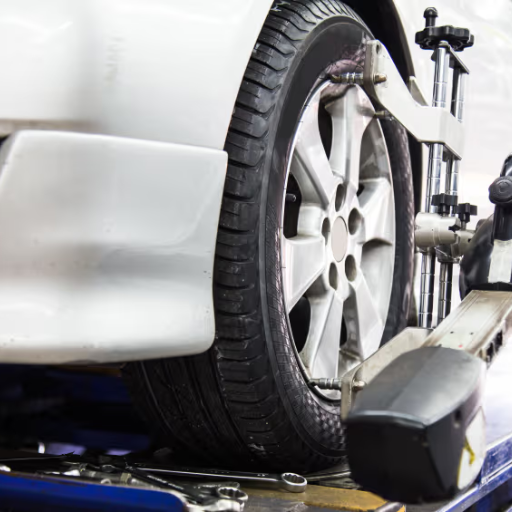
Of course. A damaged and faulty wheel bearing can contribute to the poor mileage performance of your vehicle by causing the tires to wear unevenly. It can also cause these tires to vibrate and make noise even without impacting the vehicle’s acceleration. If left unresolved, a damaged wheel bearing can worsen and even lead to severe mechanical problems on the vehicle which renders it dangerous to operate.
Understanding the role of wheel bearings in vehicle performance
Wheel bearings are important parts because they allow for the smooth and efficient rotation of the wheels. Wheel bearings bear the weight of the vehicle and allow for the movement of the vehicle while ensuring that friction is minimized and the alignment of the wheels is good. They reduce as much resistance as needed, thus allowing for an easy rotation of the wheels; in so doing, wheel bearings are helpful in improving the overall performance and fuel consumption of the vehicle and safety while driving.
How a failing wheel bearing affects driving dynamics
a defective wheel bearing affects the behavior of the vehicle in a major way. Losing me wearing that sounds like humming or sometimes grinding, which is common while turning or climbing, is also a sign of a bad bearing. This is due to the bearing’s performance capabilities being diminished. In addition, it may cause tires to wear out unevenly, handle poorly, and feel less stable. If this problem is not remedied, it may leave a hinge loose and quite a bit of safety risks due to increased repair costs. These issues can be avoided by performing regular maintenance checks.
The impact of bad wheel bearings on fuel efficiency
Let’s put it this way: the impact of defective wheel bearings on the cost of fuel should never be taken lightly. Wheel bearings are made to reduce friction, which helps the wheels roll. With a defective wheel bearing, more effort is required to turn the wheels, which results in lower fuel economy. For those who don’t comprehend it too well, more friction means more energy needs to be consumed to overcome that friction. Hence, more fuel will be burnt. And we all know what that means: less fuel economy, and that they ought to take good care of the Wheel Julies.
Here’s an explanation of the most basic parameters which describe this relationship:
- Rolling Resistance – When a wheel bearing wears down, the rolling resistance increases. Thus, the use of more energy (and gas) by the engine to overcome that resistance so that the vehicle can still move.
- Wheel Alignment – A loose or broken wheel bearing can affect the wheel’s alignment, putting the tires under uneven strain. Poor wheel alignment increases the workload in the engine, particularly when it is within the high-speed range, and fuel consumption is higher.
- Heat Build-Up – Damaged or poorly fitted or improperly maintained wheel bearings tend to heat up which is due having high friction. This heat radiates to other adjacent parts, and the dynamics of the vehicle, on average, in some way, make the vehicle less effective.
- Vehicle Stability – Natural wear of bearings will make the vehicle more prone to skids or rollovers, especially when turning or braking at corners. Such a reduced stability may increase the corrective measures in driving giving an indirect increase in fuel consumption.
Simply put, deteriorating wheel bearings lead to additional trips to the gas stations, thus becoming a nuisance to your wallet. Replacing them timely remains a more prudent approach in securing your economy than leaving them to affect it daily. If you feel or hear out-of-the-ordinary sounds or handling issues, acting on them swiftly will enhance fuel economy and the smoothness of your journey.
What Are the Most Common Symptoms of Bad Wheel Bearings?
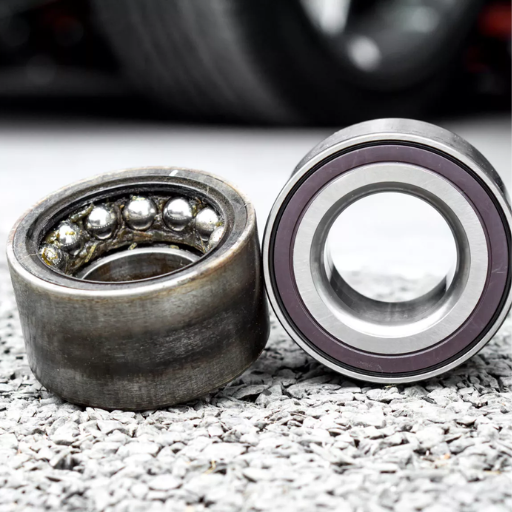
If you have a bad wheel bearing, the chances are that you might’ve experienced a few signs like humming or squealing sounds emitting from the wheels. When you accelerate during a turn and turn the steering wheel, these noises can ECME. You may also feel some tremors in the steering wheel or feel sloppiness while driving the vehicle. Furthermore, the car could start steering towards a side, which in extreme cases can include the wheel starting to sway. Ignoring these symptoms should not be an option since they can turn out to be quite dangerous and in fact probably would cause much more serious damage.
Unusual noises: grinding, humming, and rumbling sounds
grinding, humming, or rumbling sounds may usually be reliable signs demonstrating that there is a problem within the vehicle’s drivetrain, suspension, or wheel bearings. For instance, grinding noises can be a sign of abused brake wear pads and or a defective CV joint, whereas humming is usually associated with disparate wear on the tires or wheel alignment problems. On the other hand, rumbling sounds could be the result of a defective wheel bearing or even some abnormalities regarding the tires, such as cupping. Determining the exact cause sometimes demands thorough scrutiny; otherwise, neglecting them more often promotes excessive doom and could even provide some safety hazards. Instead of lagging the repair of these types of noises, all should be attended to immediately in order to ensure the performance and safety of the vehicle.
Steering wheel vibrations and wobbling
when a steering wheel shakes and wobbles it is usually a signs of some problems, but to determine the cause, there are a few factors that need to be checked. Here is what I usually look for:
- Wheel Balancing
One of the most common causes of steering wheel vibrations is unbalanced wheels. Over time, your tires may lose their balance due to regular wear and tear. I always recommend having wheels rebalanced during routine maintenance to prevent this issue.
- Tire Condition
Uneven tire wear or damage can also lead to noticeable wobbling. Inspect your tires for irregular tread patterns, bulges, or flat spots (like cupping). Ensuring that your tires are properly inflated and rotated regularly will help minimize this risk.
- Wheel Alignment
Poor alignment often results in vibrations or the car pulling to one side, especially at higher speeds. Misalignment could stem from hitting a pothole or curb, and adjusting this can significantly improve your driving comfort and safety.
- Suspension and Steering Components
Most commonly, the almost always worn-out suspension system parts, such as tie rods or ball joints, are the ones responsible for the wobbling. What I do most is to visually inspect for excessive wear or looseness of these components due to their importance in stabilizing the structure.
- Brake System
If the vibrations happen mostly when the automobile is in the process of deceleration, then it is probable that brake rotors are warped. This is usually the case when a person uses a pedal of the brake, and the person is able to palpate the feedback from the brake hard pedal.
- Wheel Bearings
The vibration of the steering wheel, as well as noise from a car, is almost always attributable to a bad wheel bearing. This problem has to be fixed as soon as possible since this can affect the steering control of the automobile.
To deal with the problem concerning steering vibration, I undertake an orderly evaluation of some parameters. These issues can normally be brought into check by regular car maintenance practices like brake checkups, alignment, rotation, and balance of tires. And most importantly, try to catch the problems early, otherwise it will wear out even faster or end up costing you more money in repairs.
Uneven tire wear and pulling to one side
Having car problems is always very terrifying as it is not only expensive but tiring as well. No one likes to be in such a tough position. One way we could avoid such problems is to take care of suspension issues and tire problems and get the wheel properly aligned. If you are able to fix such issues in your car, you will not have to worry the next time there’s a rotation or movement done to the tires, nor will you have to worry about uneven wear And tear on your tires. As a rule of thumb, if today you are taking a look at the suspension components, make sure to replace them if they have visible indications of being broken. Such practices, if adopted, will not only make your life easier but will change your perspective on the ride being smoother and safer.
How Can You Tell Which Wheel Bearing is Going Bad?
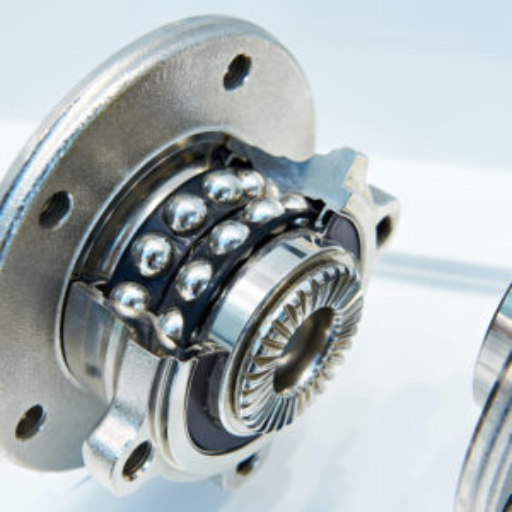
When detecting a bad wheel bearing, it’s crucial to diagnose the issue by considering some signs while driving the vehicle. If I don’t turn the focus on the expectation, which in this case is a fault, I expect I will hear a lot of loud noises; in fact, the louder I turn the volume up, the better. Also, I might notice that the car vibrates through the steering wheel or has uneven wear on the tires. To be certain of a fault, I advise carefully pushing the car up and rotating the wheel using one hand. Avoid being cut off but remain as neutral as you can; if you’re being coerced into steering, for instance, the aim should be that neither of you really deems it necessary—a little play isn’t too bad and a bit of roughness suffices. There isn’t much room for doubt when it comes to defective wheel bearings. A good practice is to replace them as soon as possible to avoid further damage to the car parts and be safer on the road.
Locating the source of wheel bearing noise
In most cases, increasing speed produces more noise, and altering the steering direction causes the noise pattern to change as well. First, determine what sound is audible and from which wheel it originates. At this stage, make a detailed diagnosis by safely jacking the car up, rotating the wheels manually, and listening for any signs of roughness or grinding. Also, lateral shaking of the wheel should be done to check for excessive play while in motion and determine whether the hub assembly is tight. Taking this approach, it becomes easy to determine the culprit wheel bearing.
Visual inspection techniques for identifying bad wheel bearings
When you embark on assessing the state of an assembly of wheel bearings, I suggest that you start with the wheel assembly. Start reviewing the setup under some light and check for some strange signs. That is, for instance, any evidence of grease leaking around the hub, which may indicate a seal as well as bearing failure. Additionally, check whether abnormal tire wear patterns have emerged, as these may indicate that a bearing is beginning to wear and its wheel has become misaligned. Furthermore, a condition where the wheel is loosely seated against the hub assembly or has loose play is highly alarming. When the bearing is defective, rust or any form of discoloration develops near the bearing area, which means that the situation is critical. By simply remembering to consider these aspects, it will be possible not only to save the bearing but also the whole functionality and safety of the vehicle.
Professional diagnostic methods for confirming wheel bearing issues
When it comes to identifying wheel bearing problems or defects, I make use of a series of mechanical tests, inspections, and specialized assessments, which I think best describe the problem at hand. Given this, let’s see how I usually do it in a step-by-step format:
- Noise Analysis: One prominent indicator of a faulty wheel bearing is generating abnormal sounds. Using a mechanic’s stethoscope or during a courtesy test drive, I will be looking for any missing or pronounced sounds, such as humming, growling, or grinding, which depend on how fast the vehicle is moving or turning. Most of these sounds emanate from uneven wear and ripping off of elements or parts internally.
- Wheel Play Test: I take great care of the vehicle and raise it while testing the wheel’s excessive movement on its axis. Holding the wheel at 6 and 12 I slightly shake it, pushing it back and forth. If any shaky feeling exists, then the bearing may need attention, there is an however check yet to ensure this rattling is not because of ball joints or tie rod to alleviate misdiagnosing.
- Rotational Smoothness Check: Manually, while lifting the wheel, I feel or check for any roughness or resistance as I spin the wheel. A good synthetic wheel blend should let a wheel spin with no resistance while holding back any backlash, tosses, and frosting feelings.
- Hub Temperature Measurement: A Yaw Bearing that is under stress Would Probably Heat Up. Whenever I have completed a drive, I tend to measure the temperature of the area around the hub with the use of an infrared thermometer. If this is the case, then the chances of that bearing failing in the future is also very strong if that hub is considerably hotter than any of the other hubs.
- Axle and CV Joint Examination: Sometimes, strange sounds coming from bearings can be attributed to joints of the axle or CV. As with any diagnostics, I verify they’re not an issue, but concentrate on diff. Points such as grease leakage, boot rips, or joint wear& tear.
- Advanced Tools – Vibration Analysis Equipment: VIBRATION ANALYSIS EQUIPMENT: Where the situation is more critical, I apply vibration analysis. They provide special frequency time readings that are characteristic of failed bearings. Such tools provide particular data essential in locating concealed imperfections.
In this way, I make sure the wheel bearings problems are solved step by step because I pay attention to detail. Practical work and advanced diagnostics give me a chance to provide effective and dependable general performance.
Is it Safe to Drive with a Bad Wheel Bearing?
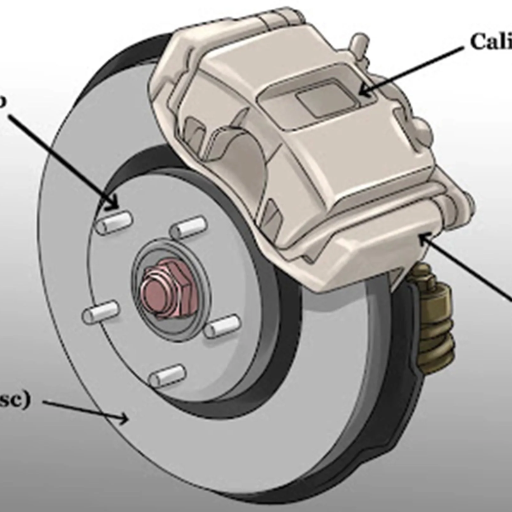
It is not secure nor safe to operate a vehicle with a worn-out wheel bearing; therefore, this should be refrained. The damaged part may rapidly deteriorate, leading to loss of control, separation of a wheel from the vehicle, or an overall complete breakdown of mechanisms. A single look at the component and making the necessary changes is really advisable for the operator as much as it is for other motorists.
Understanding the risks of continuing to drive
I wouldn’t recommend operating a vehicle that has a defective wheel bearing. If you ask me, a defective bearing can compromise the stability and smooth handling of your vehicle, which can lead to a very dangerous situation. It may lead to bad tire wear, a likelihood of the wheel breaking off, and maybe even the risk of a breakdown or an accident. Those sounds or tremors you might overlook are usually signs of more serious issues that are about to happen. Fixing the problem as soon as possible is safer than ignoring the issue, as well as preventing expensive repairs in the future.
How long can you safely drive with a failing wheel bearing?
I would never recommend driving any significant distance if it is already clear that the wheel bearing is failing. This is not to say that for such a scenario, it wouldn’t be feasible to cover a short distance to either get to a safer or repair shop, but rather, driving in that condition endangers you. The failure rate on wheel bearings is highly erratic and can result in loss of wheel or complete steering control. In such cases, the best recommendation is always to get the part checked and replaced right away.
Emergency measures when dealing with a bad wheel bearing on the road
If you suspect a bad wheel bearing while on the road, the first step is to reduce your speed and find a safe place to stop as soon as possible. Avoid sudden turns or aggressive braking, as these can exacerbate the issue. Once stopped, assess whether it is safe to proceed at a very slow speed to the nearest repair shop or call for roadside assistance. Driving further than absolutely necessary is not recommended, as it can heighten the risk of an accident and cause additional damage to the vehicle.
How Long Do Wheel Bearings Typically Last?
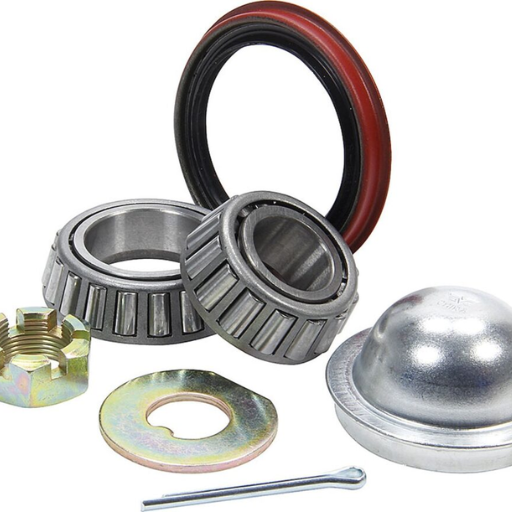
First and foremost, to determine if a wheel bearing is failing, the driver needs to slow down. Finding a suitable place to park should be the second priority. Next, everyone needs to resist swinging the steering wheel in any direction or slamming the brakes. There are two options for the driver after the car is stationary. If the vicinity is controlled properly, then moving towards a repair shop would be ideal; otherwise, it is better to call for roadside assistance. Moving the vehicle around in such a condition is discouraged as even slight movements can cause a great deal of harm to the vehicle itself and can heighten the chances of an accident.
Factors Affecting Wheel Bearing Lifespan
The longevity of wheel bearings is conditioned by a number of interrelated factors. We will now explain all these factors to enable you to comprehend their interplay better:
- Bearing Quality
Tend to select cases made of durable materials and machine the parts of high standards, in this way there is a greater possibility that the wheel bearings will be operational for longer. It is better to buy trusted names or OEM (Original Equipment Manufacturer) parts as they add reliability and improve performance.
- Driving Habits
Bumping the wheel bearings & Suspension components could be aggressive driving behavior; this includes sudden brakes, high acceleration, and high-speed cornering. Relaxed driving is better as it reduces stress on them, thus prolonging the vida de the bearings.
- Road Conditions
Hitting off-road paths, uneven surfaces, or potholes introduces vibration and impact to the bearings, leading to faster wearing. Driving on well-maintained roads eliminates lots of the hazards.
- Proper Lubrication
In order to avoid the overheating of the rolling elements, bearings require a sufficient amount of grease. As a result, periodically checking and adjusting the grease levels will inhibit the bearings’ premature destruction and rust formation.
- Load on the Vehicle
Putting stress on the dimensional limits of the vehicle adds additional strain on the wheel bearings. This added strain can cause them to deteriorate at an increased rate which makes it important to not exceed the weight limit recommended by the manufacturer.
- Weather and Environmental Exposure
Low and high temperatures, as well as constant wetness and road salt, can result in bearing rusting or even contamination. The bearings can be protected from these through the use of heating or seals and good maintenance practices on a regular basis.
- Frequency of Maintenance
Routine and scheduled maintenance, in most cases, is able to prevent minor cases from growing into larger and more expensive solutions. Scheduled visits from an auto mechanic can avoid severe problems such as strange noises or looseness, but instead, they can be found and treated beforehand.
So, you can use the road without worrying about the proper performance of the wheel, making sure safety is never compromised and that the lifespan of the wheel bearings is increased by identifying and customizing these elements.
Average mileage expectations for wheel bearings
As I have worked in the automotive industry, I know that under standard driving circumstances, steering wheel bearings have a lifetime mileage of about 75,000 to 100,000 miles, but it’s not constant as there are many factors involved such as how the vehicle is being driven, where it is driven and, how well it has been maintained. For example, a vehicle that is used on bumpy and rough paths might have a debilitating effect on the wheel bearings and reduce their life. However, regular check-ups and addressing the problems at a stage like unusual noise or absence of vibration can improve the bearing life span. There is no such mileage that I can provide that is applicable to all cars, but one thing can be said: with proper maintenance of wheel bearings, you will get the most out of it.
What’s the Difference Between a Bad Wheel Bearing and a Bad CV Joint?
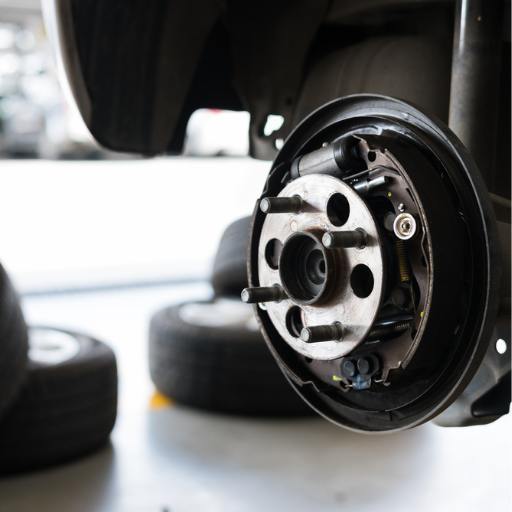
I would say that a bad CV joint and a bad wheel bearing make noise and that is the main difference between the two. Like any other vehicle component, a failing CV joint is likely making noise, and that is why the vehicle is in motion. Failing joints typically make a click-and-pop sound, especially when one is accelerating or turning the steering wheel. In contrast, wheel bearings growl or hum as a car moves or is turning. Another clear difference between a bad CV joint and a bad wheel bearing is the noise. A noisy wheel often makes terrible subsonic sounds. CV joint issues leak grease around the wheels, while other wheel bearing issues tend to leak grease around other CV boot areas, like the axle. Overall, why there are two sides to the problem, it is non discoloured grease that leaks which is most concerning. Poorly working CV joints can alter vehicles’ safety and, if DOCED, performance, too.
Distinguishing symptoms of wheel bearing vs. CV joint issues
To differentiate the symptoms between wheel bearing and CV joint problems, the focus should be placed on the sounds produced and their progression. A defective wheel bearing forms a growling or humming sound that becomes louder with acceleration or while turning but remains consistent regardless of load. On the other hand, a broken CV joint is more likely to cause a clicking sound or popping sound whenever there is a sharper turn or acceleration from a cessation point, along with loss of grease or depressed CV boot. Recognizing of these striking differences is important for making the right diagnosis and providing repairs on time.
How these components interact and affect each other
Within a vehicle’s drivetrain and suspension systems, wheel bearings and CV joints are crucial parts. Although they have different tasks, working together also determines how the safety and performance of the vehicle are boosted. This is how they interact and affect each other:
- Load Distribution
Wheel bearings, compromised over time be it through universal change or basic wear and tear, support weight and rot the wheels accordingly. With wear and tear comes sloppiness and excess movement and as those move the strain on the CV joint increases and even damages the joint over time. Thus, fixing the bearings takes precedence.
- Rotation and Movement
The powering of the wheels is done through the transmission that is delivered by the CV joint. It also helps because it is geared for movement due to steering. Now, the downside is that if the CV joint is damaged, then the rotation of the entire wheel is uneven, which results in improper distribution of the bearings that hold the wheel. From such disruptions, the bearings are increased in amounts due to wear off.
- Vibration Transmission
Having issues with the CV joint presents complications to the bearings as the bad vibrate adds extra force to the CV joint. What is also bad is if there are problems with the axle as they create force through the shock wave, sending such stress through the bearings. Over the years, using these would damage the components.
- Grease and Lubrication Dependency
The effective operation of both wheel bearings and CV joints is reliant on lubrication. Lubrication in neighboring regions may be lost or compromised due to a tear in the CV boot or leaking grease, thus affecting the bearings of the wheel. On the other hand, excess heat caused by a bearing failure may damage counterpart CV joint parts.
Focusing closely on these parameters, it is possible to conclude that wheel bearings and CV joints work together. Maintenance is critical since recognizing difficulties with one part in good time might avoid subsequent damage to the other.
When to suspect a CV joint problem instead of a wheel bearing
it’s the sound and the conditions of the driving that enable me to distinguish CV joints from wheel bearing-related problems. This lets me know if there is a reason to be concerned about the CV joints by paying heed to the volume and type of sound produced during narrow turns at low speeds. Popping and clicking sounds indicating the feeling that I mention should imply that the cross is defective. Moreover, the problems that arise due to torn CV boots mean that there is debris and moisture in the boot. However, I have learned that wheel bearing problems yield different sounds that need to be integrated with other aspects, such as road speed and changing the direction of the steering wheel. Therefore, it seems vital to the successful differentiation of these two components to observe how the structure responds to particular conditions.
How Much Does Wheel Bearing Replacement Cost?
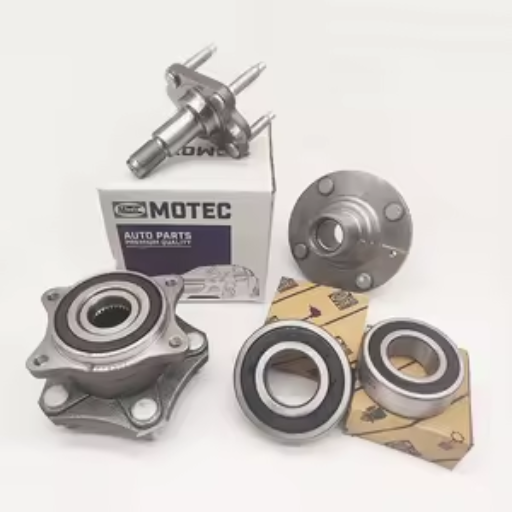
The cost of replacing a wheel bearing will depend on the make and model of your vehicle, as well as the labor market rates near you. More or less, the replacement for every wheel can cost you between $150 and $500. This cost factor can often include both the material and the work done which ranges from $50 to $200 for the bearing and the rest work done, respectively. Keep in mind that elements like the intricacy of the assigned task, whether it is the front wheel or the rear one, or whether other parts like the hub assembly require replacement, etc., may affect the figure.
Factors influencing wheel bearing replacement expenses
Over the years, I’ve observed that a few aspects play a vital role in establishing the wheel bearing replacement costs. Firstly, the nature of the vehicle one possesses can greatly affect the cost – high-end or performance cars usually have very expensive components and specially trained personnel. Secondly, there are issues of geographical location – the front wheel and rear wheel bearings may be similar or simpler in design, wherein some rear units are part of the hub assembly, which makes them more expensive. Thirdly, local labor rates will differ greatly depending on the area and the skill level of the shop. Last but not least, the final invoice can also vary if you have to carry out additional repairs, for instance, fixing an affected hub or other related components. To avoid unexpected surprises, it is best to seek an accurate quote beforehand.
Tips for finding reliable and affordable wheel bearing replacement services
Check out Wheel Hub Bearings if you’re in need of a quality and economical bearing replacement service. The best way I personally go about it is to begin with reading up. Look up certified mechanics or trusted auto repair shops in your area by scrolling through some customers’ reviews and ratings. Family and friends often also have useful recommendations. Do not be afraid to obtain several estimates for the work to be done; price is always important. Also, ask whether the shop uses OEM parts or high-quality aftermarket parts in their work so that the replacement can be effective. Finally, go to repair centers that guarantee parts and labor. This not only secures your money but also shows how much faith the shop has in their work.
Reference
- Kelley Blue Book: Wheel Bearing – How Do I Know if I Need a Replacement?
- Meineke: 6 Signs of a Bad Wheel Bearing
- SKF Vehicle Aftermarket: 4 Symptoms & Signs of a Bad Wheel Bearing
Frequently Asked Questions (FAQs)
Q: What are the most common symptoms of a bad wheel bearing?
A: The most common symptoms of a bad wheel bearing include unusual noises like grinding, humming, or whirring, especially when turning or accelerating. Other signs include vibrations in the steering wheel, uneven tire wear, and a feeling of looseness or play in the wheel. You may also notice decreased fuel efficiency and ABS system malfunctions.
Q: How can I tell if my wheel bearing is bad while driving?
A: When you’re driving, bad wheel bearing symptoms often become more noticeable. Listen for a grinding noise that changes with vehicle speed, feel for vibrations in the steering wheel, and pay attention to any pulling to one side. If you notice these signs, especially if they worsen when turning, it’s likely that your wheel bearing is bad and needs attention.
Q: What causes wheel bearings to wear out prematurely?
A: Wheel bearings can wear out prematurely due to various factors, including poor road conditions, driving through deep water, improper installation, or using low-quality parts. Regular impact from potholes or curbs can also cause the wheel bearings to wear faster. Contamination from dirt or water entering the bearing assembly can accelerate wear as well.
Q: How long do wheel bearings typically last?
A: Wheel bearings typically last between 85,000 to 100,000 miles, but this can vary depending on driving conditions and vehicle maintenance. Some may last the entire lifetime of a vehicle, while others might need to be replaced sooner. Regular inspections during routine maintenance can help identify potential issues before they become serious problems.
Q: Is it safe to drive with a bad wheel bearing?
A: It is not safe to drive with a bad wheel bearing for extended periods. A severely worn bearing can cause the wheel to wobble, affect steering control, and in extreme cases, lead to wheel separation from the vehicle. If you suspect your wheel bearing is bad, it’s crucial to get your wheel bearings checked and replaced as soon as possible to ensure safety.
Q: How can I differentiate between bad wheel bearing noise and other automotive sounds?
A: Bad wheel bearing noise is typically a grinding or humming sound that changes with vehicle speed and is often more pronounced when turning. This differs from brake noise, which is usually a high-pitched squeal or grinding that occurs when applying the brakes. CV joint noise tends to be a clicking sound during turns. If you’re unsure, it’s best to have a professional diagnose the issue.
Q: Do I need to replace both wheel bearings if only one is bad?
A: While it’s not always necessary to replace both wheel bearings if only one is bad, many mechanics recommend replacing them in pairs, especially for the same axle. This is because if one bearing has failed, the other is likely to follow suit soon. Replacing both can ensure balanced performance and potentially save time and money in the long run.
Q: How much does it typically cost to get wheel bearings replaced?
A: The cost to get your wheel bearings replaced can vary depending on the vehicle make and model, as well as labor rates in your area. On average, you can expect to pay between $200 to $800 per wheel. Some luxury or performance vehicles may cost more. Keep in mind that neglecting a bad wheel bearing can lead to more expensive repairs if it causes damage to other components like the hub, rotor, or CV joint.
